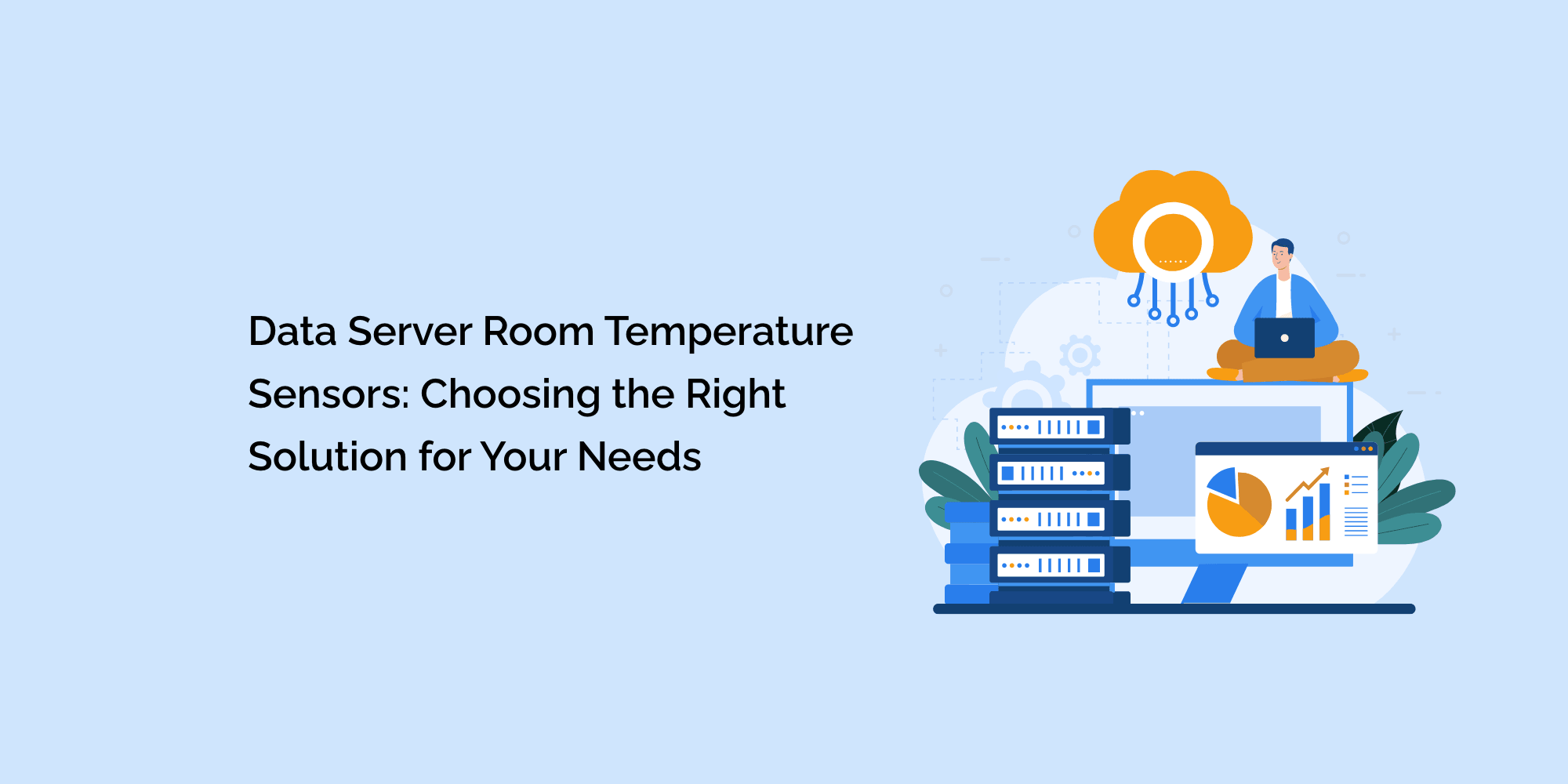In the fast-paced digital age, data centers play a crucial role in storing, processing, and delivering vast amounts of information for businesses and organizations. Maintaining optimal conditions within the data server room is essential for ensuring the reliable performance and longevity of critical hardware components. Temperature sensors are integral to data server room monitoring, providing real-time insights into temperature variations and helping prevent potential issues. In this comprehensive blog, we will explore the significance of data server room temperature sensors, the different types of sensors available, and how to choose the right solution that best suits your specific needs.
The Importance of Data Server Room Temperature Sensors:
Temperature sensors are at the core of data server room monitoring systems. They continuously measure the ambient temperature, helping data center administrators maintain an optimal environment for the servers and other hardware components. The importance of temperature sensors in data server rooms can be understood from the following perspectives:
-
Efficient Cooling Management: Temperature sensors provide crucial data for efficient cooling management. Administrators can adjust cooling systems based on real-time temperature readings to prevent overheating and optimize energy consumption.
-
Early Issue Detection: Real-time temperature monitoring enables early detection of temperature fluctuations. Administrators can take proactive measures to address issues before they escalate into critical problems.
-
Hardware Reliability: Maintaining a consistent temperature within the optimal range extends the lifespan of hardware components, reducing the risk of hardware failures and costly downtime.
- Preventing Thermal Throttling: Temperature sensors help prevent thermal throttling, where servers reduce performance to avoid overheating. This ensures continuous and uninterrupted operations.
Types of Data Server Room Temperature Sensors:
Data server room temperature sensors come in various types, each offering unique features and functionalities. Understanding the different types of sensors can help you choose the right solution for your specific needs:
-
Wired Temperature Sensors: Wired temperature sensors are physically connected to the monitoring system through cables. They provide accurate and reliable temperature readings but may require additional installation effort.
-
Wireless Temperature Sensors: Wireless temperature sensors use wireless technology to transmit temperature data to the monitoring system. They offer greater flexibility and ease of installation, making them suitable for retrofitting existing data center infrastructures.
- Analog Temperature Sensors: Analog temperature sensors provide continuous temperature data, represented by a voltage or current signal. They are compatible with analog monitoring systems.
-
Digital Temperature Sensors: Digital temperature sensors provide precise and accurate temperature readings in digital format. They are compatible with modern digital monitoring systems.
- Remote Temperature Sensors: Remote temperature sensors are designed to be placed at a distance from the monitoring system, allowing temperature monitoring in various locations within the data center.
Factors to Consider When Choosing Temperature Sensors:
Selecting the right temperature sensors for your data server room requires careful consideration of several factors:
-
Accuracy and Precision: Choose temperature sensors with high accuracy and precision to ensure reliable temperature readings.
-
Compatibility: Ensure that the temperature sensors are compatible with your existing monitoring infrastructure or the monitoring system you plan to implement.
-
Placement Flexibility: Consider the layout of your data server room and opt for sensors that provide flexibility in placement to cover critical areas effectively.
-
Sampling Rate: The sampling rate refers to how frequently the temperature data is collected and transmitted. Choose sensors with an appropriate sampling rate based on your monitoring requirements.
-
Remote Monitoring Capability: If you require temperature monitoring in remote or hard-to-reach areas of the data center, consider using wireless or remote temperature sensors.
-
Environmental Conditions: Ensure that the temperature sensors can withstand the environmental conditions within the data server room, including temperature extremes and potential humidity.
-
Scalability: Choose sensors that can be easily scaled to accommodate the growth and expansion of your data center.
- Data Security: Consider the security features of the temperature monitoring system to protect sensitive temperature data from unauthorized access.
Integrating Temperature Sensors with Monitoring Systems:
The integration of temperature sensors with monitoring systems is crucial for efficient data center management. When choosing temperature sensors, consider their compatibility with your monitoring system or choose a monitoring system that can integrate with the selected sensors seamlessly. Integration allows for centralized temperature data collection and analysis, enabling data center administrators to make informed decisions regarding cooling strategies and preventive maintenance.
The Role of Calibration and Maintenance:
Regular calibration and maintenance of temperature sensors are essential to ensure their accuracy and reliability. Periodic calibration ensures that the sensors provide precise temperature readings, minimizing the risk of misinterpretation and false alarms. Additionally, regular maintenance ensures that the sensors are functioning optimally and are free from dust or debris that could affect their performance.
Remote Monitoring and Alerts:
Choose temperature sensors that offer remote monitoring capabilities and can send real-time alerts when temperatures deviate from the optimal range. Remote monitoring enables administrators to access temperature data from anywhere, improving response times to potential issues. Alerts ensure that administrators are promptly notified of temperature fluctuations, allowing for immediate action.
Temperature Sensor Redundancy:
Implementing temperature sensor redundancy is crucial for ensuring continuous monitoring even during sensor failures. Redundant temperature sensors provide backup data, minimizing the risk of data gaps and ensuring accurate temperature monitoring.
Conclusion:
Data server room temperature sensors are integral to maintaining optimal conditions within the data center environment. They play a crucial role in efficient cooling management, early issue detection, and hardware reliability. When choosing temperature sensors, consider factors such as accuracy, compatibility, placement flexibility, and integration with monitoring systems. Regular calibration and maintenance are essential to ensure the accuracy and reliability of the sensors. By selecting the right temperature sensors and implementing best practices for temperature monitoring, data center administrators can optimize cooling efficiency, prevent downtime, and safeguard critical hardware components, ensuring seamless operations and reliable performance in the digital era.








